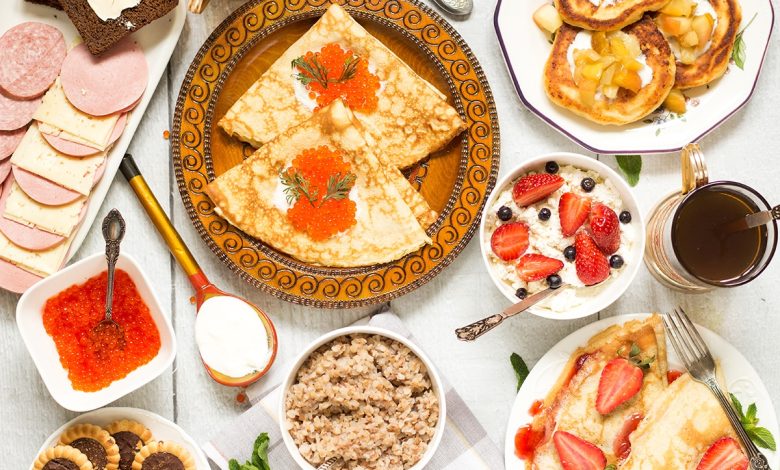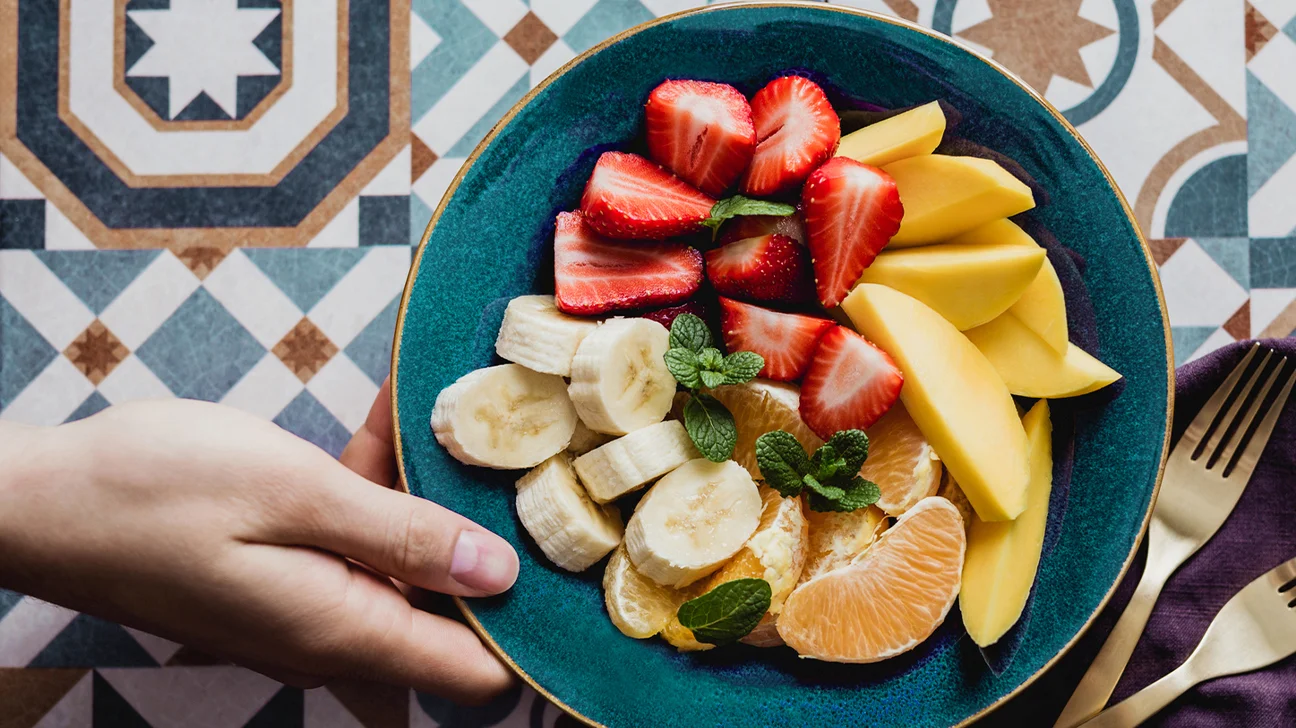Russian breakfast is not just a sandwich for you!

And although it looked different in different centuries, its role has always been great. What is a traditional Russian breakfast?
In general, the word “breakfast” in Rus’ is not at all an obvious synonym for the current scrambled eggs and a sandwich with sausage. Each century has its own, not at all similar to today. Perhaps the Swan for breakfast – today, perhaps, even the richest oligarch will not come up with this idea.
Today, many people prefer not to eat much in the morning. So, a cup of coffee, yes bread and butter. If after that you sit at the computer for half a day, then it’s normal. But if you plow in the field, thresh rye or chop wood, then somehow it will not be enough. Sometimes the hostess got up early and baked pancakes. Not uncommon was the habit of eating stew for breakfast – cabbage soup. They were good not so much as a fat (there are also fasting days), but as an opportunity to eat a loaf of bread “under them”. Those were the required calories.
This practice continued into the 19th century. Hardworking people have always valued breakfast. So, for example, the famous Russian gardener Efim Grachev (1826-1877), hiring peasants to work, always provided them with cabbage soup and bread for breakfast (without a norm).
In addition, workers were served porridge – either oatmeal or millet. “Because of this, the working man was never served jelly – he does not give satiety,” wrote the famous Russian ethnographer Pavel Nebolsin in the book “Around the Peasants” (1862).
It’s just that he had other concerns: to ride 20 miles on a hunt, go around the farm, fields, flog the guilty in the stable. Everything needed to be looked after. So sometimes before lunch you won’t get out of the saddle.
Boiled pork, fried meat, pickles, eggs, jelly. Pancake pies. Before tea entered into a wide life, they washed it down with kvass, sour soup (this is also for a hangover), sbiten, fruit drinks.
The mores of a bygone age seem bizarre today. And breakfast dishes are a long-gone antiquity. History brought us the menu served near Tula for breakfast to His Serene Highness Prince Grigory Potemkin:

The change comes around the end of the 18th century, when the way of life of the Russian aristocracy changes somewhat. There is no more physical activity. The daily routine of the city is predictable – a service, a ministry, an assembly, an evening ball. The whole diet of a wealthy society is gradually changing: it becomes lighter, more elegant.
At the same time, an unexpected historical surprise awaits us. – In the morning, depending on the time, who gets up when, they drink tea, coffee, to which they serve something bread. A glass of vodka for breakfast? – Isn’t it strange?
The magazine “Panorama of Petersburg” for 1834 left us this rather vivid description of how the townspeople ate. Note – these are not aristocratic feasts, but simply food for a more or less wealthy audience.
Moscow also did not lag behind the capital. For example, the New Peterhof restaurant, located on Mokhovaya opposite the Manege, in 1911 served 2 appetizer dishes for breakfast to choose from (hot and cold), a carafe of vodka, coffee or a glass of beer. At the same time, these breakfasts were probably designed for the public, tired of evening libations, since they were served from 12 o’clock.
Breakfast in that era was simply not alone. Usually at 8-9 o’clock the family sat down for morning tea. You could also drink coffee and chocolate. For children, milk was supposed to be with a stale (!) bun, smeared with butter. Adults could afford pies, cookies, crackers.
Then, at 11-12 o’clock, a more substantial breakfast followed, where most often leftovers from yesterday’s dinner were served, plus some specially prepared inexpensive dish (for example, fried potatoes or pancakes).
Thus, the book “Secular Life and Etiquette”, published in 1896, believes that “this still recent custom among us deserves praise rather than censure.” For this breakfast, “sandwiches and sliced bread are stacked in order on plates.” You could serve egg dishes or a piece of ham.

Sandwiches – that’s what changes the style of breakfast at the end of the XIX century! Of course, we have known this word since Peter the Great. However, in that era, they are more of an appetizer. So among these appetizers – caviar, salmon, boiled pork – sandwiches quickly and easily found their place.
From then until the second half of the 19th century, sandwiches in Russia were more like an appetizer menu for receptions, restaurants or expensive taverns that claim to be “high style”. But the next step – “breakfast sandwich” – they do in the 1870-90s.
Butter is a longstanding problem in Russian cuisine. The most common – having the name “Russian”, is melted. Until the end of the 19th century, what we mean by butter was called “Chukhonsky” in our country, according to the place of its production – the Baltic states and Finland.
And it was at the end of the 19th century that it went on sale in Russia. As noted in Russian cookbooks of that time, the most elite varieties in St. Petersburg trade were then rightly considered “myznoye” butter and butter (then it was not its characteristic, but simply a name, a variety). So the latter has been actively used for homemade sandwiches.
As contemporaries noted, “if they want to feast on butter,” then it was necessary to have butter, “now brought to the last degree of perfection.” Of this variety in St. Petersburg, the most famous was Schwartz butter, named after the owner of a huge estate on the borders of Finland, where in the best years up to 2000 dairy cows were bred.
Actually, the whole further history of domestic breakfasts will be connected with the sandwich. After all, her next stage is the USSR and Soviet cuisine. The sandwich there has a completely different meaning and meaning. His logic is to make life easier for a woman, to make a morning quick snack convenient and technologically advanced.





